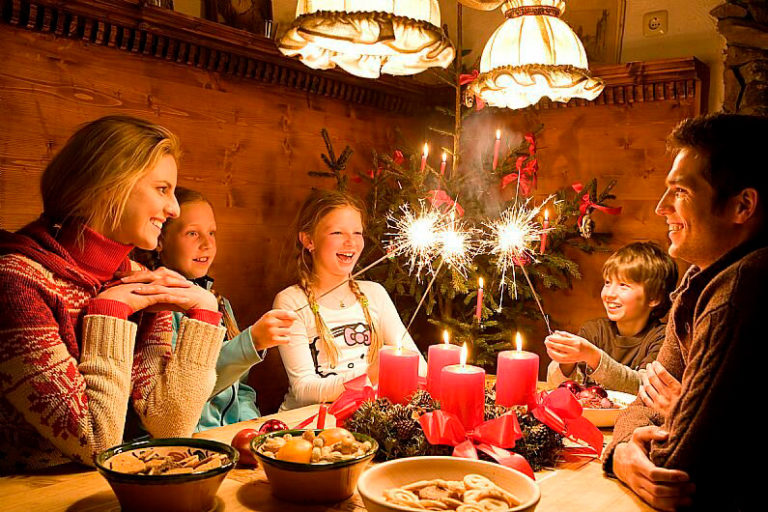
Family traditions and rituals have been an integral part of human society for centuries. They serve as the invisible threads that weave family members together, creating a sense of belonging, identity, and continuity. In today’s fast-paced, constantly changing world, these traditions become even more vital. While modern lifestyles often challenge the maintenance of routine practices, research consistently demonstrates that families who actively participate in shared rituals tend to report stronger emotional bonds, better communication, and greater resilience in the face of adversity. This essay explores the significance of family traditions, how they foster emotional connections, and their role in providing stability and a sense of continuity for children and adults alike. Additionally, the essay presents a practical table illustrating different types of traditions, their characteristics, and their impact on family life.
Defining Family Traditions and Rituals
Family traditions are patterns of behavior, often repeated over time, that hold symbolic meaning for family members. They can range from daily routines, such as shared meals, to annual celebrations like birthdays, religious holidays, or cultural festivals. Rituals, a subset of traditions, often carry deeper emotional or symbolic significance, sometimes connected to spirituality or cultural heritage. Unlike ordinary habits, traditions and rituals are intentional and are consciously maintained to reinforce family identity and values.
Key Characteristics of Family Traditions:
-
Consistency: They occur regularly, whether daily, weekly, or annually.
-
Shared Participation: All or most family members engage in the activity.
-
Meaningfulness: The practice has emotional, cultural, or symbolic significance.
-
Flexibility: While the core remains consistent, adaptations over time allow the tradition to remain relevant.
For instance, a family that gathers every Sunday for a shared meal not only enjoys the food but also uses this time to discuss the week’s events, share achievements, and offer emotional support. Over time, these simple gatherings become markers of stability and affection, providing members with a sense of predictability and connection.
Emotional Bonds and Communication
One of the most profound effects of family traditions is their ability to strengthen emotional bonds. Shared rituals foster an environment where trust, empathy, and understanding can flourish. Through repeated interactions, family members learn to anticipate each other’s needs, express care, and resolve conflicts in supportive ways.
Research indicates that children who grow up in families with consistent traditions tend to have higher self-esteem and stronger social skills. Participating in rituals teaches children how to express emotions, develop empathy, and appreciate the perspectives of others. For adults, these traditions provide opportunities to reconnect amidst busy schedules, reducing feelings of isolation and stress.
Table 1: Examples of Family Traditions and Their Emotional Benefits
| Tradition Type | Description | Emotional/Developmental Benefits |
|---|---|---|
| Weekly Family Meals | Shared meals on specific days | Improves communication, strengthens attachment, provides stability |
| Birthday Celebrations | Annual recognition of each family member | Enhances self-esteem, sense of belonging, positive memories |
| Holiday Rituals | Religious or cultural celebrations | Promotes cultural identity, reinforces shared values, emotional bonding |
| Bedtime Stories | Reading or storytelling before sleep | Develops cognitive skills, nurtures imagination, emotional security |
| Outdoor Family Activities | Hiking, picnics, or park visits | Encourages teamwork, stress relief, strengthens sibling/parent relationships |
| Volunteering Together | Community service as a family | Cultivates empathy, moral development, family pride |
This table illustrates that traditions vary widely in form and function but consistently serve as tools for emotional growth, moral development, and family cohesion.
Creating Stability Through Rituals
Beyond emotional connections, family traditions and rituals contribute significantly to a sense of stability. In an era characterized by rapid change, instability, and uncertainty, predictable routines provide psychological security. Children, in particular, thrive when they know what to expect in their daily lives. Rituals act as anchor points, giving children a sense of control and predictability, which is critical for healthy development.
For example, a nightly bedtime routine not only fosters discipline but also provides comfort and security. Celebrating anniversaries or family milestones reinforces the idea that achievements and relationships are valued, creating a framework that guides family members’ expectations and behaviors. Stability derived from these rituals also helps families navigate crises. Research shows that families with established traditions are more resilient during events such as relocation, loss, or illness, as these rituals act as familiar touchstones amidst change.
Additionally, traditions help transmit cultural values and moral lessons across generations. When grandparents share stories from their youth or families observe cultural holidays together, children internalize lessons about respect, gratitude, and perseverance. These practices bridge generational gaps and ensure the continuity of family identity and heritage.
Modern Challenges and Adaptations
Maintaining family traditions in modern society can be challenging. Busy schedules, technological distractions, and geographic separation can disrupt regular participation. However, families who are intentional about creating meaningful rituals often find creative solutions. For instance, virtual family dinners over video calls can replace in-person gatherings when distance is a barrier. Families can also invent new traditions that align with contemporary lifestyles, such as “digital-free weekends” or themed movie nights.
The key to sustaining traditions is flexibility without compromising the emotional core of the ritual. Traditions are not rigid rules; they are living practices that adapt as the family evolves. In doing so, they continue to provide connection, meaning, and stability, even in the face of changing circumstances.
Moreover, involving children in the creation of new traditions fosters ownership and engagement. When children help choose activities or plan events, they are more likely to value and uphold these rituals into adulthood, passing them on to future generations.
Conclusion
Family traditions and rituals are far more than ceremonial or superficial practices—they are foundational elements of emotional development, relational cohesion, and psychological stability. By providing consistent, meaningful, and shared experiences, these rituals strengthen bonds between family members, foster effective communication, and create a secure environment for children to grow and thrive. Even amidst modern challenges, intentional and adaptive approaches to family traditions ensure that these practices continue to serve as pillars of connection and stability. Ultimately, the deliberate cultivation of family rituals not only preserves cultural and familial heritage but also promotes emotional well-being and resilience for generations to come.

